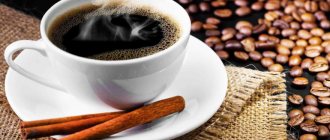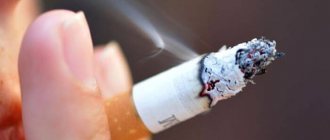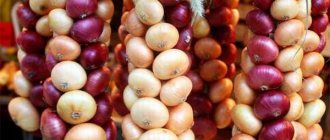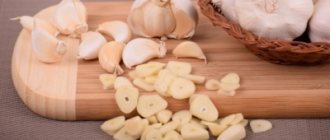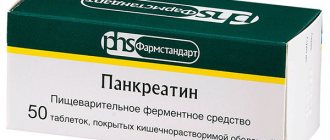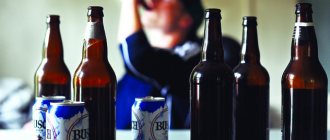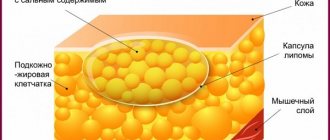Inflammatory processes in the tissues of the pancreas lead to the development of serious diseases and the appearance of severe symptoms. As a result, there is a violation of the secretory functions of the organ and disruption of digestive processes. It is important to start treatment on time to prevent complications. You cannot do without drug therapy, since all actions are aimed at eliminating the symptoms.
treatment of pancreas with traditional methods
When the pancreas becomes inflamed, treatment with folk remedies becomes an additional salvation in eliminating unpleasant symptoms.
Buckwheat
The most effective recipe for treating pancreatitis is buckwheat with kefir on an empty stomach . This dish stimulates the pancreas, renews its cells, relieves pain, controls the concentration of sugar in the blood, and reduces the degree of inflammation.
Treatment with buckwheat and kefir is suitable for those who have the disease in remission. In addition, the dish can be consumed for preventive purposes.
INGREDIENTS
- 1 tbsp. buckwheat
- 0.5 l low-fat kefir
COOKING
- Pour kefir over well-washed buckwheat.
- Let it sit for 12 hours.
- Eat one part of buckwheat for breakfast, the second - 2 hours before bedtime.
- The course of treatment lasts 10 days, after which you should take a break for a similar period and take the course again. Pancreatitis can be treated in this way 2 or 3 times a year.
People with acute pancreatitis should not include raw, even soaked, cereals in their diet. It is undesirable to use buckwheat with kefir immediately after severe exacerbations of a chronic process.
What is inflammation of the pancreas
The disease is called pancreatitis. It develops in the form of inflammation in any part of the pancreas or encircles the entire organ. Pancreatitis can be acute or chronic. During the pathological process, tissue breakdown (necrosis) of the pancreas occurs. In this case, the person feels constant aching or cutting pain. Over time, the syndrome becomes stronger, sometimes leading to a state of shock. Painful sensations radiate to the left or right hypochondrium. Other symptoms:
- diarrhea;
- vomiting mixed with bile;
- dry mouth;
- belching, increased gas formation;
- temperature increase;
- decreased blood pressure;
- sweating;
- dyspnea;
- pale skin;
- pronounced coating on the tongue;
- weight loss.
Unlike the chronic form of pancreatitis, the acute form is life-threatening. If a person has developed this disease, he feels a sharp girdle pain in the upper abdomen. He vomits often. Many people experience severe weakness and dizziness due to a drop in blood pressure. The patient notices that he is defecating food that is not completely digested. Acute inflammation of the pancreas is characterized by repeated attacks accompanied by severe pain.
- Fortune Cookie Predictions - Wishing Texts
- How to take glycine for adults and children. How long and how often to take glycine
- How to remove a love spell
The doctor diagnoses the disease using ultrasound. The diagnosis is confirmed if there are diffuse changes in the pancreas. Recovery, as a rule, comes spontaneously. Pancreatitis does not cause irreversible damage to the organ, except in cases of constant alcohol abuse by the patient. In this case, tissue destruction occurs continuously. What stimulates the development of the disease:
- frequent consumption of fatty foods;
- alcoholism;
- inflammation of the stomach and other digestive organs;
- cholecystitis (as a result, cholecystopancreatitis may develop);
- if a person takes any medications for a long time;
- hormonal imbalance.
Oat milk
Ordinary oats, the biological and chemical properties of which have an analgesic and enveloping effect, can effectively treat problems of the pancreas. The substances contained in the flakes relieve inflammation. Consuming oat milk and oat jelly brings noticeable results.
INGREDIENTS
- 100 g oat flakes
- 1 liter of water
COOKING
- Fill the cereal with water.
- Cook for 40 minutes over medium heat.
- After this, you need to grind the oats to a paste and cook for another 20 minutes.
- After cooking is complete, strain the resulting “milk.”
- Take the decoction 3-4 times a day, 100 ml, 10 minutes before meals.
Curdled milk
Surprisingly, fermented milk products are suitable for the treatment of pancreatic diseases not only for their internal use. Many people are helped by applying a linen cloth soaked in ordinary yogurt to the left hypochondrium in the stomach area before going to bed. Such a compress must be covered with cellophane and secured by wrapping the body with a woolen scarf. Perhaps there is a placebo effect here, but this recipe, nevertheless, is included in the numerous list of folk methods that alleviate the symptoms of pancreatitis.
Potato juice
It’s not for nothing that they say that potatoes are the second bread. This product is one of the most effective in the treatment of inflamed pancreas. Methods for treating pancreas at home include drinking both boiled potatoes and their juice.
To obtain juice, grate the potatoes and strain the juice into a clean container using regular medical gauze. The resulting folk remedy should be drunk in an amount of 100 ml 2 hours before each meal. Additionally, 5 minutes after potato juice, drink kefir with no more fat than 3%.
The course of such treatment should be 2 weeks and repeated 3-4 times. Potato juice can also be mixed with carrot juice (in a 1:1 ratio), taking a 30-minute rest in a horizontal position after taking this “cocktail”.
How to treat the pancreas with diet
The primary measure for exacerbation of chronic pancreatitis is diet. If a person has developed an acute form of the disease, you should immediately call a doctor, and after discharge from the hospital, adhere to the rules of dietary nutrition. For the first 3 days you should fast; you are only allowed to drink plenty of non-carbonated mineral water (preferably warm). After fasting, a patient with pancreatic inflammation is prohibited from eating a number of foods.
General principles of nutrition
In case of inflammation of the organ, it is recommended to switch to 6 meals a day with small portions. Products can be steamed or boiled in water, after which they must be pureed to a puree consistency. You should eat food only warm, avoiding cold and hot food. The diet for pancreatitis includes lean soups with cereals, chicken soufflé. Fresh low-fat fermented milk products are recommended. This nutritional system is low in calories and contains a minimal amount of fat.
Authorized Products
- Porridge cooked in water.
- Lean meat/fish.
- Vegetable broth soup with cereals.
- Sunflower/olive oil.
- Low-fat cottage cheese/kefir.
- Durum pasta.
- A small amount of butter.
- Stale white bread.
- Some fresh fruits.
Prohibited Products
- Alcoholic, carbonated drinks.
- Smoked products.
- Pickles, canned food.
- Spices, especially hot ones.
- Sweets, including ice cream, baked goods, others.
- Marinades.
- Fatty meats and fish.
- Sausage, sausages,
- Strong tea/coffee.
Healing herbs
Treatment of the pancreas with herbs is based on their analgesic, anti-inflammatory, and cleansing properties. Thus, a decoction of birch buds and lingonberry tincture perfectly rid the body of accumulated glucose.
A decoction of sage stimulates the production of insulin in the required amount by the gland, and decoctions of iris and wormwood improve digestion. A tincture of dried or regular chamomile and immortelle helps to quickly relieve an attack, thanks to the pain-relieving properties of the plants.
Tibetan medicine about diabetes
Chronic pancreatitis is one of the forms of the inflammatory process occurring in the pancreas. The disease is characterized by a long course, during which irreversible pathological changes occur in the cells and tissues of the gland.
If chronic pancreatitis is severe, in the pancreas you can observe a large percentage of replacement of full-fledged healthy tissue with connective and fatty tissue. As a result of this transformation, pancreatic dysfunction develops and, as a consequence, diabetes mellitus.
The concept of diabetes mellitus combines a group of hormonal diseases that lead to disruption of the absorption of glucose by the body's tissues due to an absolute or relative lack of insulin, the hormone responsible for the penetration of glucose into the body's cells. Remaining in large quantities in the bloodstream, undigested glucose “saturates” the walls of blood vessels, making them hard and brittle, which further leads to complications: damage to the kidneys (diabetic nephropathy), retina (diabetic retinopathy), sensitivity (diabetic polyneuropathy).
Diabetes and the three doshas
In Tibetan medicine, the diagnosis of diabetes was defined as “cloudy water” or “cloudy urine.” According to Tibetan doctors, the disease developed either according to the “hot” type, associated with a violation of the harmony of the Bile dosha, or the “cold” type, a disturbance of the Mucus and Wind dosha.
It is the balance of the three constitutions (Wind, Bile and Mucus) that determines human health, Tibetan doctors believed. The Wind dosha controls the nervous system, Bile controls the digestive and cardiovascular systems, and Mucus controls hormonal and fat metabolism and controls all mucous membranes.
Diabetes mellitus of the “hot” type
The Bile dosha is projected in the body onto the liver and gall bladder. It was the anatomical feature of the connection between the pancreas and biliary tract that Eastern doctors pointed out as one of the reasons for the development of the “sweet disease”. Bile is necessary for the breakdown of fats, converting them into a water-soluble state, and pancreatic juice is responsible for the further absorption of fats, proteins and carbohydrates. In addition, the pancreas performs an endocrine function by releasing insulin into the bloodstream.
Before bile is released into the duodenum, its ducts connect with the excretory tract of the pancreas. This united duct is closed from the lumen of the duodenum by the sphincter of Oddi, a muscular sphincter that relaxes and opens in response to the entry of food into the intestines. Bile is essentially an alkali, thanks to which it neutralizes the acidic environment of gastric juice so that the food mass coming from the stomach to the intestines does not subsequently burn the delicate mucous membrane.
Causes and course of “hot” diabetes
Tibetan healers considered the unbridled angry mind to be the most important provocateur of the indignation of the Bile constitution. It is anger as an emotion that reflexively, through psychosomatic connections, contracts the gallbladder and forces it to empty. As a rule, gusts of anger and irritation torment the mind on an empty stomach.
Thus, bile cannot enter the lumen of the duodenum, because the sphincter of Oddi is closed. Then a portion of bile goes straight through the united channel and enters the tissues of the “younger Queen,” as the pancreas is called in Eastern medicine. Bile acts not only as a chemical aggressor, it also has the property of activating pancreatic enzymes, and self-digestion of the organ begins.
The first part of the pancreas, the head, is affected. This is where the B cells that produce insulin are located. Chronic reflux of bile leads to inflammatory replacement of normal gland tissue with connective tissue. Both exocrine (production of pancreatic juice) and endocrine (production of insulin) functions are lost.
Diabetics often complain that they have never eaten sweets, so where does the high blood sugar come from? However, excessive consumption of yang food - an abundance of spices, meat, spicy, fatty, fried foods - leads to disturbance of the constitution of Bile. Now it becomes clear that by changing your diet and lifestyle you can stop the progress of diabetes mellitus of the “hot” type.
Diabetes mellitus of the “cold” type
Excess weight and consumption of cold, yin foods lead to disturbance of the Mucus dosha - this is an abundance of dairy products, sweet foods, raw vegetables and fruits. Yin food extinguishes the fiery warmth of the stomach and reduces its digestive ability. First comes "ma-zhu", an indigestion disease in Tibetan medicine. Excess mucus accumulates in the stomach. For such people, the conclusion of a fibrogastroduodenoscopy will indicate: there is a large amount of cloudy mucus in the lumen of the stomach. Over time, mucus sinks into the intestines, causing “cold” mucous constipation, provokes the appearance of smug-po (tumors in Tibetan) - polyposis and intestinal diverticulosis.
Mucus cools the pancreas, soaking it, causing swelling and impaired blood flow.
Constitution Wind also belongs to the “cold” types. Since Wind controls the nervous system, the dosha is vulnerable to constant experiences and stress. Violations of the “Rising Wind” manifest themselves in unreasonable fear, various phobias, and memory loss. A block in the normal flow of the “descending Wind” (downward cleansing) is manifested by despondency and a depressive mood. In Western medicine, Vetra's diabetes corresponds to type 1 diabetes.
Treatment of “cold” diabetes
Treatment of “cold” diabetes involves correction of nutrition - here, on the contrary, Yang, warming food is needed, it is recommended to be warm, in a calm, cozy environment.
Herbal medicine occupies a special place in Tibetan medicine. The taste and properties of the ingredients of such preparations are selected in order to harmonize the three human constitutions and ensure the correct flow of energy through energy channels. An experienced doctor can determine the cause of the disease using the pulse alone and prescribe the appropriate medicine.
Currant, chamomile and chokeberry
INGREDIENTS
- 1 tbsp. l. black currant leaves
- 1 tsp. chamomile flowers
- 2 tsp. chokeberry fruits
- 1 tsp. oregano herbs
- 0.5 l water
APPLICATION
- Boil water, pour in ingredients.
- Leave for 5–6 hours. Strain.
- Take 0.25 cups of infusion 2 times a day 30 minutes before meals.
Chamomile and immortelle
INGREDIENTS
- 1 tbsp. l. chamomile flowers
- 1 tbsp. l. immortelle
- 1 tbsp. boiling water
APPLICATION
- Pour boiling water over the ingredients and leave for 30 minutes. After this, strain.
- Take 120–125 ml 2–3 times a day 30 minutes before meals, for 2–3 weeks.
Wormwood and iris
INGREDIENTS
- 0.5 tbsp. l. wormwood
- 0.5 tbsp. l. common iris
- 1 tbsp. boiling water
APPLICATION
- Mix the ingredients and pour boiling water. Leave for 1 hour, then strain.
- Take 0.5 cups half an hour before meals 3 times a day.
Milk thistle becomes a real salvation for pancreatitis ; it helps relieve attacks and normalize the condition of the pancreas. Milk thistle contains many useful microelements; the plant helps improve the health of the pancreas in any form - decoction, meal, oil.
Pharmacies sell milk thistle preparations specifically for the pancreas. Some preparations contain extracts or plant extracts. But natural options without synthetic processing are healthier for the body.
Drug treatment of the pancreas
Recovery with absolute restoration of the organ with pancreatitis is impossible to achieve. The main direction of treatment is to prevent further destruction of the pancreatic structure. It is prohibited to start taking medications on your own (with the exception of mild antispasmodics), since this can provoke irreversible changes in human organs and systems.
An exceptionally experienced doctor can select therapeutic agents for the treatment of pancreatitis. Drug treatment of the disease consists of eliminating a number of problems:
- Pain relief. An exacerbation of the disease is characterized by a high degree of pain. They are treated with drugs such as Papaverine, No-shpa, Atropine, Novocaine, etc. It is forbidden to take Nise, Aspirin and other NSAIDs. They thin the blood, irritate the digestive mucosa and can stimulate internal bleeding.
- Decreased pancreatic secretion. They use Omeprazole, Contrikal, Allochol.
- Cleansing and unloading of the pancreas. To do this, take enzymes and medications based on plant components that stimulate the digestive process. These include: “Befungin”, “Festal”, “Alma-gel”, “Creon”, “Digestal”, etc.
- Antibacterial action. The doctor prescribes mild antibiotics such as Ampicillin and Gentamicin to prevent the development of infections.
- Replacement therapy. To restore water and electrolyte balance, physiological and saline solutions are prescribed.
- Skeletal bone scintigraphy
- How to cook fish soup
- DIY acorn crafts for children
Milk thistle
INGREDIENTS
- 30 g milk thistle meal
- 0.5 l water
APPLICATION
- Fill the powder with water. Cook over low heat until volume is reduced by about half.
- Drink the decoction for a short time, up to three weeks, 1 tablespoon before meals.
To get a greater effect from treatment using traditional recipes, you need to coordinate their use with your doctor. It should be noted that some remedies are more effective at the initial stage of the disease. Others are useful for exacerbation of the disease or the appearance of compactions. In addition, certain rules must be followed.
